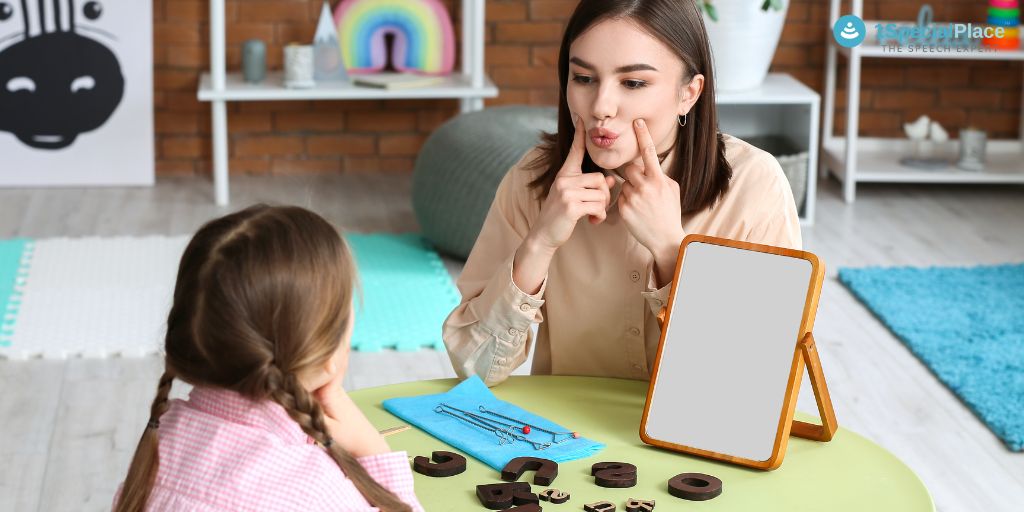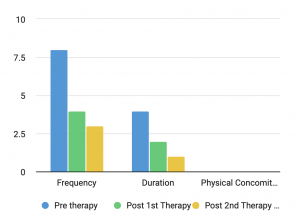
Efficacy of online therapy in childhood stuttering relapse: A Case Study
Efficacy of online therapy in childhood stuttering relapse: A Case Study
Participant
A 6-year-old male child with a diagnosis of mild childhood stuttering was considered for this study. The child was studying in grade 1. The parents’ reported that the stuttering was present mainly when the child was excited or anxious. Written consent was obtained from the parents for this study.
Method
The child was assessed on Stuttering Severity Instrument (SSI-4) including spontaneous speech and reading samples. The scores were as follows: Frequency: 8, Duration: 4; and Physical concomitance: 0. A diagnosis of mild childhood stuttering was made upon detailed evaluation and testing. Stuttering behavior was noted to be mild across all tasks including speaking, reading, monologue, and conversation. The clinician counted the total stuttered words per standard protocol to arrive at the overall scores for SSI-4.
The stuttering behaviors comprised whole word repetition at the beginning of the sentence, unfilled pauses accompanied by a fast speech rate. In addition, the child had a coping mechanism. The child did not exhibit any secondary behaviors like jaw jerks, frequent eye blinks, movement of upper extremities, and articulatory fixations during moments of stuttering.
After evaluation
Once the evaluation and testing were completed, the child was advised to undergo speech therapy for Stuttering. The participant enrolled for Fluency Shaping Therapy thrice a week (45 minutes/ session) for one month and twice a week for the next six months from January 2022.
The second evaluation was done in February 2023 after the child had discontinued the speech therapy sessions from August 2022. The parents reported a relapse in the dysfluency and the child was feeling difficult to communicate when he was anxious and excited. The child was again enrolled in Fluency Shaping Therapy thrice a week (45 minutes/session) for four months till May 2023.
Assessment and treatment sessions were conducted via tele practice using the Zoom video-conferencing software. The clinician and participant used a Dell intel core i5 laptop with 300mbps and an in-built camera with an external microphone and speaker.
During the First treatment session.
The parents insisted that the child is unaware of his dysfluency and should not know that his speech is dysfluent. So, the clinician involved more of games and interactive activities during the session.
Strategies such as easy onset phonation, continuous phonation, modified finger against thumb technique, and passive airflow technique were incorporated during the treatment sessions. The child attended 2 generalization sessions on Zoom video-conferencing platform.
During the Second treatment session
This time the child was thought the same fluency-shaping strategies but with more of how the strategy would help him improve his speech. He was also made to listen to his speech to understand better.
Analogies such as lily pad analogy, and smooth verses bumpy speech were demonstrated to make the child understand the quality of his speech. Strategies such as easy onset phonation, continuous phonation, stretched syllable technique, light articulatory contacts, modified finger against thumb technique, and passive airflow technique were incorporated during the treatment sessions. The child attended 2 generalization sessions and two group therapy sessions on the Zoom video-conferencing platform monitored by a monitored by Speech Language Pathologist.
Results Post the First treatment session
A pre-therapy and a mid-therapy score assessment was done to determine progress. The stuttering severity instrument (SSI-4) was re-assessed by the end of five months of inconsistent stuttering therapy. The results showed there was significant progress even though the therapy sessions were inconsistent.
Results showed a significant improvement in the overall severity of stuttering in the participant. Post therapy the scores were as follows: Frequency: 4, Duration: 2, and Physical concomitance: 0. The post-therapy score was within the mild stuttering severity on SSI-4. The child showed positive progress in the overall fluency of speech. Stuttering disruptions such as word repetitions, unfilled pauses, and fast speech rate were significantly reduced post-therapy.
Results Post Second Treatment Session
A pre-therapy and a post-therapy score assessment was done to determine progress. The stuttering severity instrument (SSI-4) was re-assessed by the end of four months of intense stuttering therapy. The results showed there was significant progress in reducing the severity of speech dysfluency.
Results showed a significant improvement in the overall severity of stuttering in the participant. Post therapy the scores were as follows: Frequency: 2, Duration: 1, and Physical concomitance: 0. The post-therapy score was within the mild stuttering severity on SSI-4. The child showed positive progress in the overall fluency of speech. Stuttering disruptions such as word repetitions, unfilled pauses and fast rate of speech were significantly reduced post-therapy.
- Yoga for Stuttering: Can It Help Improve Speech Fluency? - July 25, 2023
- Efficacy of online therapy in childhood stuttering relapse: A Case Study - July 14, 2023
- Why do you need Speech Therapy? - December 21, 2022


Leave a Comment
(0 Comments)